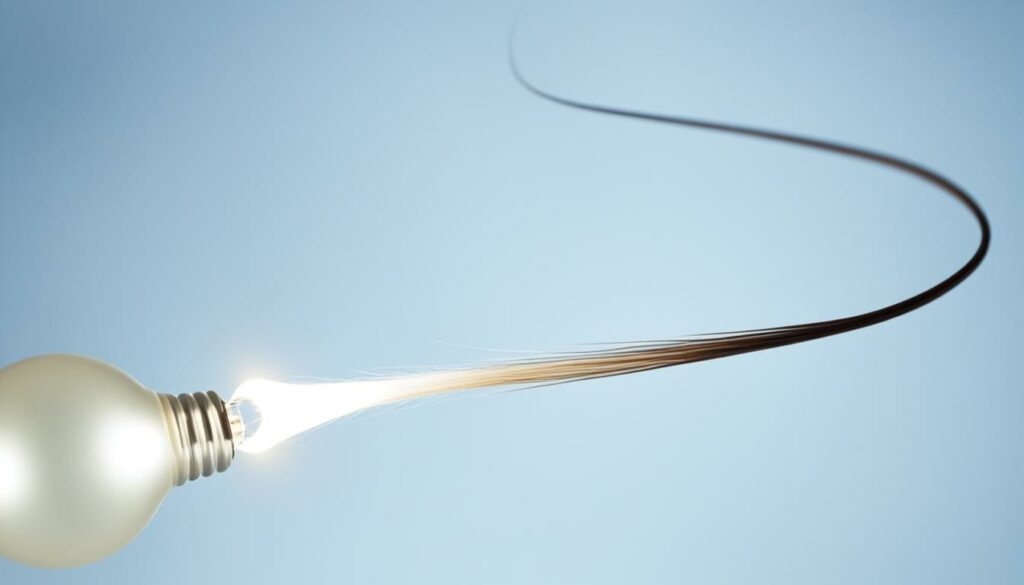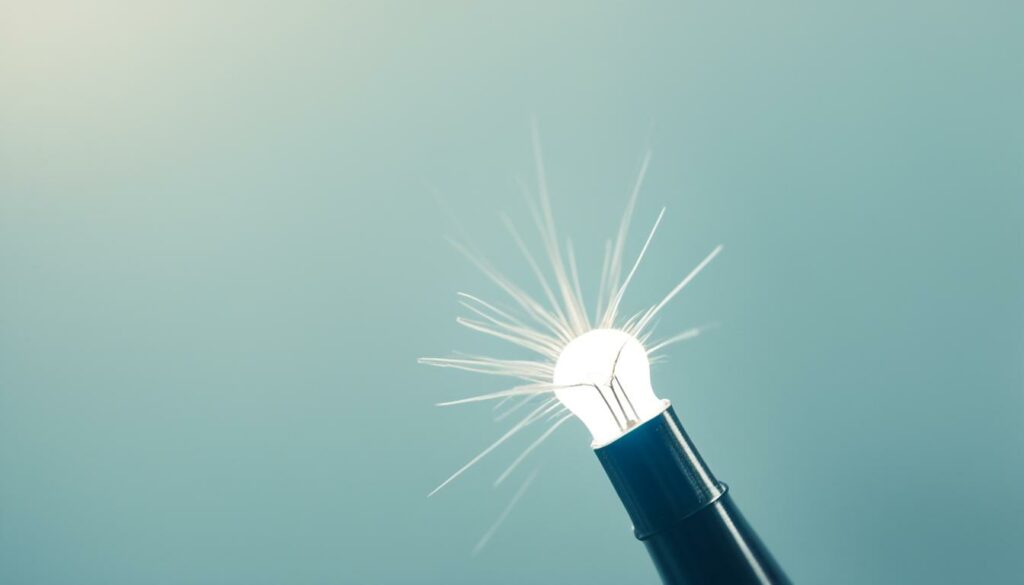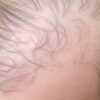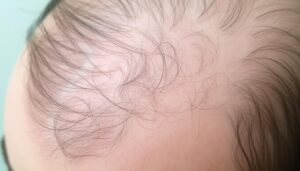Have you ever seen a white bulb at the end of your hair when it falls out? It might look strange and make you wonder: “What is this white stuff at the end of my hair?” This white bulb could mean something important about your hair and scalp health. Whether you are experiencing pattern baldness, thinning hair and showing signs of hair loss with regularity, We’ll look into what it is, why it happens in this guide.

Key Takeaways
- The white bulb at the end of hair is known as the hair follicle, which anchors the hair to the scalp.
- Excessive hair shedding, dry and brittle hair, and certain underlying conditions can contribute to the formation of white bulbs.
- Understanding the causes and signs of white bulbs can help you address the root of the issue and maintain healthy, vibrant hair.
- Seeking professional treatments can effectively manage hair loss and promote hair growth.
- Paying attention to the appearance of white bulbs can be an early indicator of potential hair and scalp health concerns.
Understanding the White Bulb at the End of Hair
The white bulb at the end of a hair strand is a natural part of it. It’s also called the “hair root” or “hair bulb.” This area is key for hair growth and health. It’s filled with living cells that make new hair and give it the nutrients it needs.
What is the White Bulb?
The white bulb, or “hair follicle,” is where hair growth starts. It makes the keratin protein that makes up the hair shaft. It also controls how fast the hair grows. The bulb is deep in the skin, giving the hair a strong base to grow from.
Causes of the White Bulb Formation
- The white bulb forms during the anagen phase, the active growth stage.
- New hair cells in the bulb push the hair shaft up and out of the skin.
- The bulb’s white color comes from lots of blood vessels and nutrients for the hair.
Knowing about the white bulb helps us understand hair health. It’s key to fixing hair issues like shedding or slow growth.
Keeping the white bulb healthy is vital for strong, healthy hair. Next, we’ll look at what can affect the bulb and how to manage hair problems.
White Bulb At End Of Hair
Seeing a white bulb at the end of a hair strand is normal. It means the hair has reached the end of its growth cycle and has fallen out. Losing a few hairs with white bulbs is part of the natural cycle and shouldn’t worry you.
The white bulb at the hair’s end is called the “hair root” or “hair papilla.” It’s the base of the hair follicle that feeds and supports the hair. When the hair’s life cycle ends, the white bulb comes off, letting the hair fall out naturally.
It’s normal to lose a few hairs with white bulbs daily. This shows your hair growth cycle is working well. Most people shed 50 to 100 hairs a day, and white bulbs on some of these hairs are not a concern.
The Hair Growth Cycle
The hair growth cycle has three main phases:
- Anagen phase: The active growth phase, where the hair grows from the follicle.
- Catagen phase: The transitional phase, where the follicle shrinks and the hair detaches from the blood supply.
- Telogen phase: The resting phase, where the hair stays in the follicle and eventually sheds, making way for new hair.
White bulbs are most seen during the telogen phase. This is when the hair has finished growing and is ready to be shed.
White bulbs on shed hairs are usually not a problem. But, losing a lot of hair or seeing sudden changes in white bulbs could mean a health issue. If you notice big changes in your hair, see a healthcare professional for help and advice.
Signs and Symptoms of Hair Shedding with White Bulbs
Seeing white bulbs at the end of shed hair is normal. But, if you lose a lot of hair or notice changes in its texture, it might mean there’s a problem. Knowing the signs can help you know when to get help.
Excessive Hair Loss
Look out for losing more than 100 hairs a day. If you’re losing a lot of hair, especially with white bulbs, it could mean a bigger issue. This could be hair falling out with white bulb or losing hair with white bulbs.
Dry, Brittle Hair
Also, watch for hair that’s dry, brittle, and breaks easily. If your hair is like this and you see white bulbs, you should take action fast.
“Paying attention to the signs and symptoms of hair shedding with white bulbs can help you identify and address the root cause before the problem worsens.”
Potential Underlying Conditions Related to White Bulbs
Seeing white bulbs at the end of shed hair is common, but sometimes, it hints at deeper health issues. These issues can mess with the normal hair growth cycle. This can lead to more hair falling out with white bulb or changes in hair quality.
Hormonal imbalances could be one reason. Hormonal changes during pregnancy, menopause, or some medical conditions can affect hair growth. This might cause white hair follicle at the end of shed strands.
Not getting enough vitamins and minerals important for hair health can also be a factor. Not having enough iron, zinc, or biotin can lead to white bulb at end of hair and hair quality issues.
Autoimmune disorders like alopecia areata can also cause hair loss. This happens when the immune system attacks hair follicles. It can lead to more hair shedding and white bulbs at the hair ends.
“Identifying and addressing the underlying cause is crucial in managing hair loss and promoting healthy hair growth.”
If you see more hair falling out with white bulb or other hair changes, see a healthcare professional. They can figure out the cause and create a plan to help you. This can support healthy hair growth.

What Should You Do If You Are Experiencing Hair Loss?
It’s easy to feel like you simply have to accept the new look that comes from pattern baldness, but the bottom line is, you have options when it comes to hair loss. If you are looking for a hair restoration solution, consider scalp micropigmentation. This innovative procedure is a precise application that is administered to the head, creating the illusion of darker, thicker hair follicles. It can be used to treat pattern baldness, receding hair lines and visible scar tissue on the head. Scalp micropigmentation also can create the appearance of fuller, thicker hair. For more information about this non-surgical scalp grooming procedure, contact Scalpmasters today to schedule your free consultation appointment.
Conclusion
Having a white bulb at the end of a shed hair strand is normal. But if you see a lot of hair falling out with white bulb or your hair quality changes, pay attention. It’s time to get professional advice.
Learning about the white bulb at end of hair and its causes helps you keep your hair healthy. Addressing hair issues early can lead to vibrant, beautiful hair. Stay informed and act quickly to keep your hair looking great.
The white hair follicle is part of the hair cycle. But if you see big changes or concerns, talk to a trusted healthcare pro. With the right advice, you can manage your hair health and feel confident with a full, healthy head of hair.










